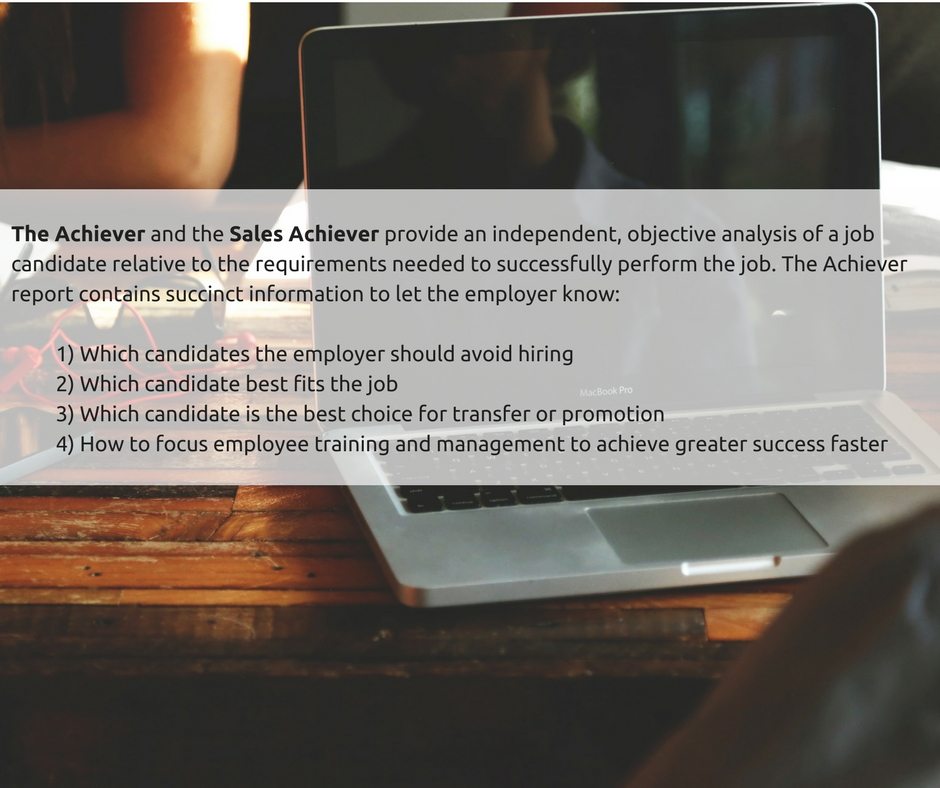
“Great vision without great people is irrelevant.” —Jim Collins
The Benefits of Pre Employment Assessment
It’s easy to rely too much on how a candidate presents themselves during an interview. But at the highest levels, it can be difficult to distinguish between highly qualified individuals. Knowing that each candidate is presenting only their most positive qualities, how can you rely solely on the impression they make during an interview?
When making a hiring decision, we need to understand a candidate’s behavior in a wide range of situations. We need to assess a potential hires mental aptitude and personality dimensions to ensure that they are the best fit for the organization. Behavior is a product of three factors: Genetics, Biochemistry and Environment.
Genetics dictate physical characteristics, as well as some behavioral ones. Biochemistry involves the chemical processes that influence the way our bodies operate, such as the physical impact of what we ingest. Environment pertains to the effects our surroundings have on us, from where and how we grew up, to our current lifestyles.
When a person’s biochemistry and environment is altered, their behavioral output may shift as well. Significant changes can result in variations in one’s temperament, work abilities, and everyday decisions. This includes developments such as starting a new job, as one’s colleagues and even physical location will be different from their usual experiences. It is an invalid premise, therefore, that the past is a reliable predictor of the future.
If an employer can’t solely count on the veracity of data obtained in an interview, and they recognize that the past may not accurately predict one’s behavior in the future, how do they gain the objective info needed to evaluate a job candidate’s potential for success? The solution is to use a multi-factor job fit assessment.
By definition, a test is a series of questions whose results are presented as a singular score. An assessment, however, is a series of tests with a score for each separate section. This allows multiple areas to be measured. A good job fit assessment encompasses tests of an individual’s mental aptitudes and personality factors, in order to compare them to the requirements of the work position.
The Achiever Assessment is recognized for being the first job-related assessment in the United States that contains both mental and behavioral measurements in the same instrument. It is fully validated in accordance with the Uniform Guidelines on Employee Selection Procedures, as enforced by the Equal Employment Opportunity Commission (EEOC).
By assessing applicants and current employees on The Achiever or Sales Achiever, employers are able to identify each individual’s true talents. With this information, they can objectively compare candidates, generate interview questions, and create specific training and development programs.
The Achiever and Sales Achiever scores are presented using a benchmark pattern. A benchmark pattern represents the range of scores on the assessment that reflect the aptitudes and traits needed for successful performance in each job category.
The first option to create a benchmark, called the concurrent validation method, is the preferred approach. It validates the use of The Achiever for a specific employer, providing additional assurance of job relatedness of the Achiever. However, an accurate concurrent validation study is not always possible due to a limited number of top performers in a job category.
When it is not feasible to perform a concurrent study, the second and third methods are viable alternatives. Once benchmarks are established, future candidates—as well as current employees seeking a promotion or transfer—can be compared to the ideal trait patterns for the job. By utilizing a benchmark, an employer can compare how an individual who has been tested with The Achiever aligns with the requirements for the job in question. Comparison of an individual’s scores on The Achiever to the benchmark provides concrete data as to a person’s likelihood for success. The scores are then plotted on a stanine (standard nine) scale, which corresponds to the Normal Bell/Distribution Curve. This makes it even easier to review whether the candidate is a good fit for the position.
Our goal is to help businesses connect with the best candidates for their career opportunities. When a person’s skills et aligns with the right job, everyone wins. We encourage you to contact us to learn more about how The Achiever and Sales Achiever Assessments can benefit your company.


